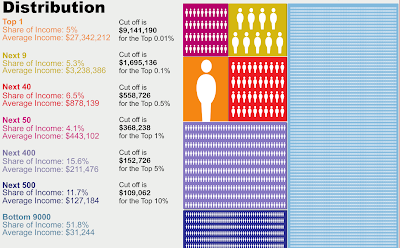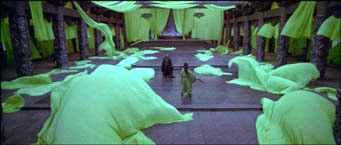UPDATE 5/26/2014: More information here.
UPDATE 4/28/2014: Big thanks to Molloy and Helen for helping me get my facts straight. If today's edits need more fixing it is because of my confusions, not their nice explanations.
Lane Community College might be in trouble.
Like most community colleges, it is able to offer more than a "life skills and trade school" education.
It can offer more because of Federal financial aid. More than 70% of LCC students get what can seem like
free money by signing up for classes.
Enrollment expands. The college can in many ways develop a university-like atmosphere and community.
Consider the letter our president sent out at the start of this term to faculty and staff.
Colleagues,
The
fifth day of spring term and already great things have been happening
at Lane with lots more to come. For example, on Wednesday we hosted
Jonathan Swanz whose installation Vibrant Matter – Sculpture in Glass
can be seen in the Art gallery and in Building 10. Following an
interesting lecture on his work we had the opportunity to witness an
amazing collaboration between Jonathan and Bonnie Simoa and Sara
Nemecek. To see our dance faculty and students interact with the art
work was truly magical. Tomorrow we will host the annual pow wow,
delayed due to the snow in December, but nonetheless a wonderful
gathering that is well worth attending. On Sunday, April 6 Hisao
Watanabe will conduct the Lane Chamber Orchestra. Sparky Roberts is
directing A Midsummer Night’s Dream which will open on April 16. Stan
Taylor and his team have put together a strong, dynamic program for the
Peace Symposium on April 25
Awakening the Dreamer - Move to Action. There is so much more but
whether it is the Arts or Diversity all of these events add a richness
for our students and our community. These activities enhance the work
you are doing providing great learning experiences in the classroom and
across the college as you interact with students. In the midst of
budgeting, bargaining, governance review, accreditation (about which you
will hear more in separate communications) it is heartening to pause
for a moment and recognize and enjoy the depth and breadth of what Lane
Community College is all about.
Best wishes for spring term.
Mary
Visiting artists, a
longhouse and pow wows, and a
Peace Center's symposium are nice things. But students would hesitate to pay for them with what feels like their
own money.
(Colleges really do get "free money" that does not pain any spender by the amount of grants and through how inflation reduces the financial cost of the students' Federal loan debt.)
However, this spending is unsustainable. Too many students were taking classes just for the useful Federal financial aid money without ever finishing a degree or program, or successfully transition to a four-year college.
UPDATE 4/28/2014: Today I studied a Board Meeting and updated budget proposals. Learning what cuts are under consideration is fascinating, a bit sad, and a very different subject.
Also, too many students were defaulting on their Federal loans.
The Federal government stops offering Pell Grants and Direct Loans through schools whose three-year cohort default rate reaches 30% for three consecutive years (see
page 57).
An overview of this process is that a rate is determined for each year. A draft is published in February and finalized in September. Colleges have a time window in which they may contest the data for both draft and finalized rates (see
page 58).
For fiscal year 2010 the LCC rate was finalized at
30.6%.
For 2011 only a draft rate has been published, at
30.0%. LCC is appropriately reviewing and contesting that data. If the college can reduce this rate below 30% before or soon after it becomes a final rate in September then the college will be secure offering financial aid for at least two more years.
The 2012 data is collected through September, published as a draft rate next February, and finalized next September.
For rates past 2012 the college is not very worried. A new policy this school year requires all students to meet with an academic advisor to make sure they are either casual students (taking a class for fun, without financial aid) or devoted students actually on track to finish a degree or program or successfully transition to a four-year college. Enrollment has dropped ten percent as this change has weeded out the people who were enrolling in classes primarily for the financial aid money. The college expects the new policy to henceforth keep their default rate below 30%, because the students who do earn some sort of diploma are more likely to pay back their loans.
However, there is a chance that in
September 2015 (a) the 2010 rate will remain at 30.6% and
(b) the 2011 rate will be finalized above 30% and
(c) the upcoming 2012 rate will
also be finalized above 30%.
If all three of those conditions do happen, then LCC would lose the ability to offer Federal Pell Grants and Direct Loans. That consequence would last until the end of the 2017 fiscal year. By the end of that time, the college would look a lot more like a "life skills and trade school" educational institution.
To repeat, LCC has at least another sixteen months of safety, and two decent chances to avoid any problems.
Some other colleges are not so secure.
Here is a list of institutions in danger of losing their ability to give Federal financial aid in September of his year.
UPDATE 4/28/2014: I have learned that without
Federal financial aid the college would quickly close its doors. That
confuses me. But I confess that I lack understanding of both the cost
of maintaining LCC's physical infrastructure and the opportunity cost of
leaving a building inactive for three years. It saddens me to learn
that a community college education is perhaps only economically feasible when subsidized.
What happens to me if LCC does lose the ability to offer those Federal financial aid?
If the college does not shut its doors, I would not expect the math division to change much. Math classes do not need expensive equipment or materials (unlike nursing or automotive mechanics). A math class with twelve or more students is profitable. All of my "math foundations" classes start at thirty. (By the end of each term four to six students have vanished.)
In other words, the Math division is a "cash cow" for the college. Cutting math classes or staff would be silly.
Detail: The fact that my classes have more than double the number of students to be profitable might be important.
To some extent the current LCC tuition cost of $93/credit is a subsidy-inflated value. It can be that high because most students use Federal financial aid. If the tuition rate stopped being buoyed up by subsidy then LCC would have to respond. The college would be forced to lower the tuition rate to what students could afford without assistance, and cut the programs and activities that were no longer financially feasible.
As one hypothetical example, if LCC did lose the ability to offer Financial aid and responded by cutting the tuition rate by half. Now a math class would need twice as many students (twenty-four) to be profitable. My low-level math classes would still earn the college money. They would even cover the loss of math classes such as third-quarter calculus that seldom have twenty-four students.
But LCC has entire departments in which classes as big as twenty-four students are rare. If tuition was hypothetically halved, those departments would be in big trouble. Not to mention the longhouse, Peace Center, health center, and many other student services.
Moreover, student demand for low-level math will remain. My math classes help people get better jobs. They also save money for students starting at community college before transferring to
U. of O. and
USO.
And if I did lose my job at LCC? Then I would start my own business doing about the same teaching.
LCC,
U. of O., and
OSU all have math placement tests. Students who took private classes would not earn credits, but would be able to place into higher math classes. It would be a bother to run a small business (which is why I teach at LCC), but not a big change and probably more lucrative.
UPDATE 5/30/2014: Today I heard that a typical LCC math class needs 18 (not 12) students to be profitable. This number changes slightly because not all instructors are paid the same (especially full-time versus part-time).
















